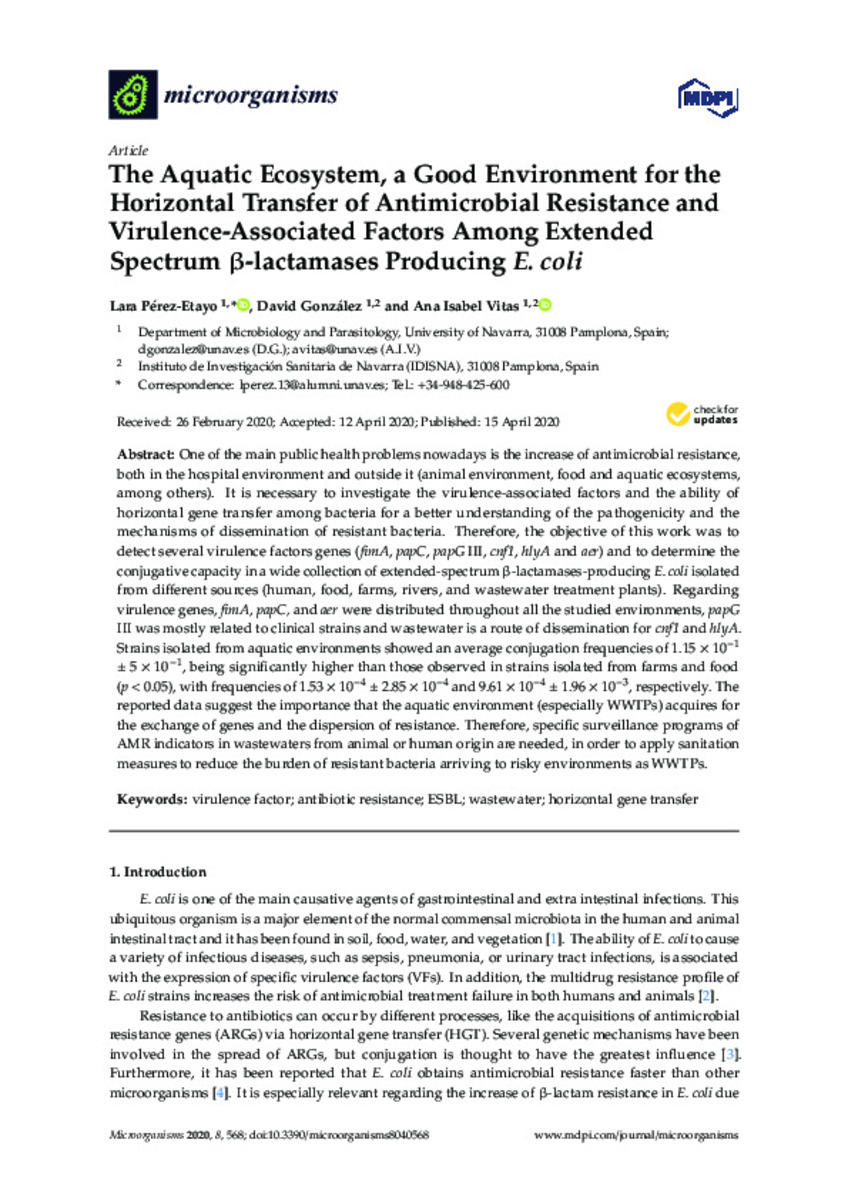The aquatic ecosystem, a good environment for the horizontal transfer of antimicrobial resistance and virulence-associated factors among extended spectrum beta-lactamases producing E. coli
Keywords:
Virulence factor
Antibiotic resistance
ESBL
Wastewater
Horizontal gene transfer
Note:
This article is an open access
article distributed under the terms and conditions of the Creative Commons Attribution
(CC BY) license (http://creativecommons.org/licenses/by/4.0/).
Citation:
Pérez-Etayo, L. (Lara); González, D. (David); Vitas, A.I. (Ana Isabel). "The aquatic ecosystem, a good environment for the horizontal transfer of antimicrobial resistance and virulence-associated factors among extended spectrum beta-lactamases producing E. coli". Microorganisms. 8 (4), 2020, 568
Statistics and impact
0 citas en

0 citas en

Items in Dadun are protected by copyright, with all rights reserved, unless otherwise indicated.







